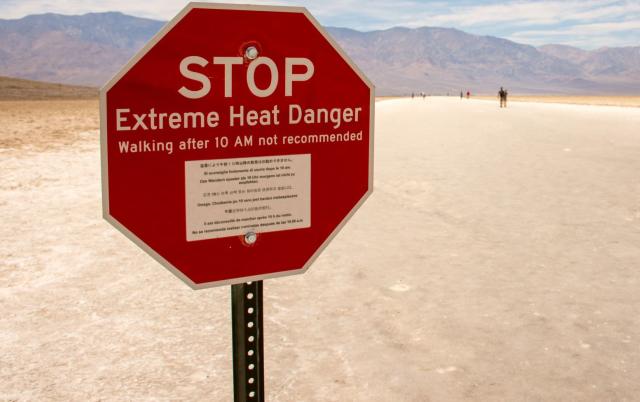The European climate agency Copernicus announced on Wednesday that earth’s string of 13 straight months with a new average heat record came to an end this past July as the natural El Niño climate pattern ebbed.
But July 2024’s average heat just missed surpassing last year’s July, and scientists have said that the end of the record-breaking streak changes nothing about the threat posed by the climate crisis.
Copernicus’s deputy director, Samantha Burgess, was quoted in a statement as saying that the overall context hasn’t changed and that “Our climate continues to warm.”
Human-caused climate change drives extreme weather events that are wreaking havoc around the globe, with several examples just in recent weeks. In Cape Town, South Africa for instance, thousands were displaced by torrential rain, gale-force winds, flooding and more. A fatal landslide hit Indonesia’s Sulawesi island. Beryl left a massive path of destruction as it set the record for the earliest category 4 hurricane. And Japanese authorities said more than 120 people died in record heat in Tokyo.
Read also: Report: Biomass power station produced four times emissions of UK coal plant
The globe for July 2024 averaged 62.4F (16.91C), which is 1.2F (0.68C) above the 30-year average for the month, according to Copernicus. Temperatures were a small fraction lower than the same period last year. It is the second-warmest July and second warmest of any month recorded in the agency’s records, behind only July 2023. The Earth also had its two hottest days on record, on 22 July and 23 July, each averaging about 62.9F.
During July, the world was 2.7F (1.48C) warmer, by Copernicus’s measurement, than preindustrial times. That’s close to the warming limit that nearly all the countries in the world agreed to in the 2015 Paris climate agreement: 1.5C.
El Niño – which naturally warms the Pacific Ocean and changes weather across the globe – spurred the 13 months of record heat, said Copernicus senior climate scientist Julien Nicolas. That has come to a close, hence July’s slight easing of temperatures. La Niña conditions – natural cooling – aren’t expected until later in the year.
But there’s still a general trend of warming.
“The global picture is not that much different from where we were a year ago,” Nicolas said in an interview.
“The fact that the global sea surface temperature is and has been at record or near record levels for the past more than a year now has been an important contributing factor,” he said. “The main driving force behind this record temperature is also the long-term warming trend that is directly related to buildup of greenhouse gases in the atmosphere.”
Story was adapted from the Guardian.
